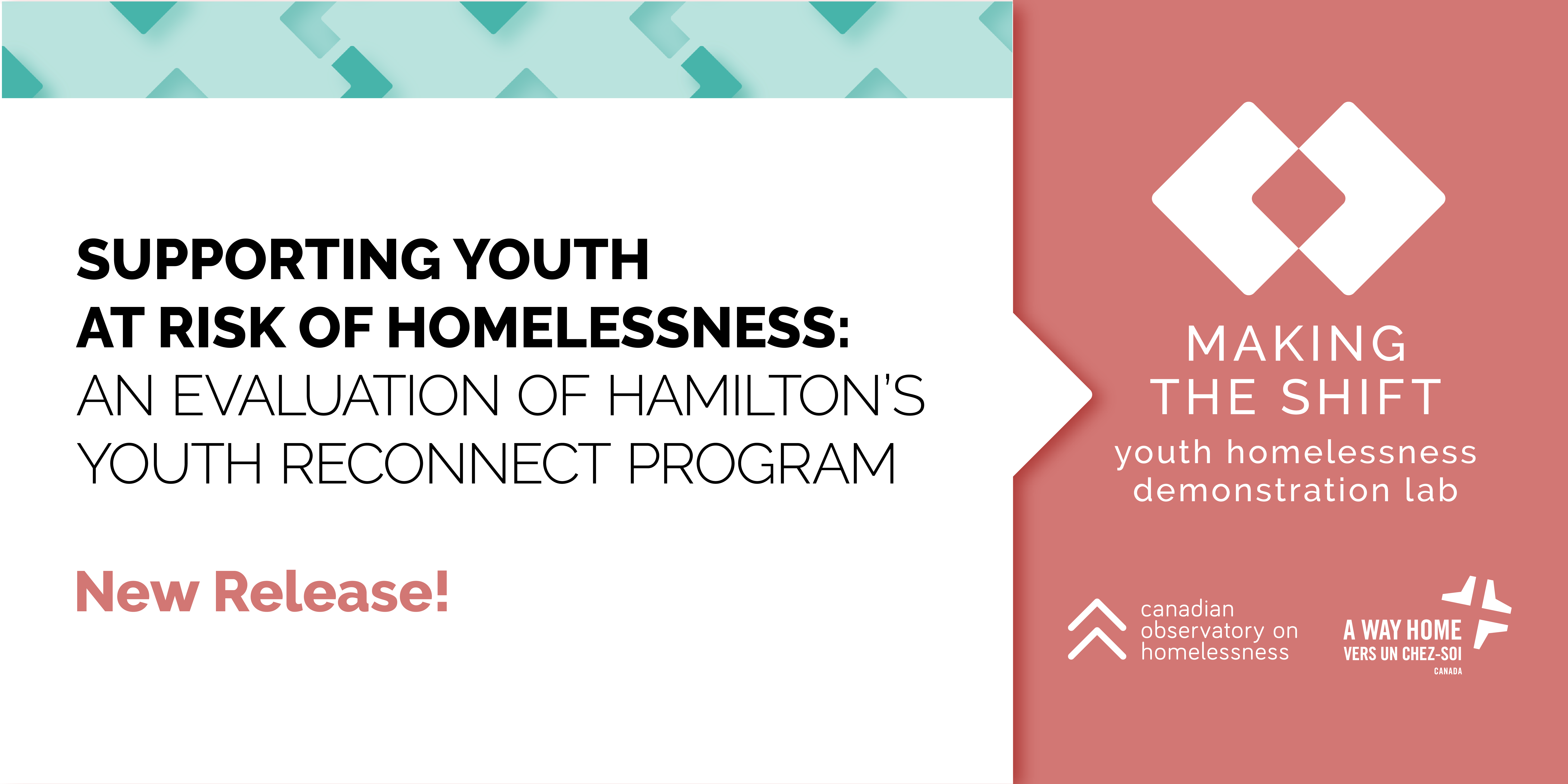Long before Youth Reconnect (YR) became a program in Hamilton, young people were slipping through the cracks. Jessica Ward, Manager of Community-Based Programs at Good Shepherd, says that since the program was implemented in the summer of 2018, they’ve seen a decline in the number of young people accessing the shelter and other emergency services. The program is filling an important gap in the local system of care. Jessica says, “We started Youth Reconnect because we wanted to apply what we had learned from our early intervention work more broadly and earlier.”
Research shows that multiple social and individual circumstances contribute to youth leaving their homes. These include family trauma, unaddressed developmental and emotional needs, lack of a safe and stable family home, and inadequate policies and practices across multiple service systems (Samuels et al., 2019, Gaetz et al, 2014). Early intervention programs like Hamilton Good Shepherd’s YR are designed to intervene early, keeping young people in stable homes and connected to school. Although we know of successes of the program through anecdotal accounts, there is limited evidence on the impact of YR programs in Canada. Much of the research comes from Australia, where the YR program originated.
The YR program provides youth who are at risk of or experiencing homelessness immediate access to support that will stabilize their housing and assist them in creating and strengthening connections with their families, education systems, and communities. Depending on the young person’s choices, these supports can include mental health services, family mediation, housing, and other community-based services. “Our job is to help youth if they’re at risk and ensure they never have to come to a shelter,” says Joselin Marcaccio, Youth Reconnect Case Manager at Good Shepherd Centre in Hamilton. She continues, “These are the kids that five years, 10 years down the line could have trouble navigating the system. We’re their safety net before they have no other option but the shelter.”
Making the Shift recently conducted an implementation evaluation of the program, which identified key components, modifications, successes and challenges, and recommendations for improvement. One major factor contributing to the success of YR is the flexibility staff are given to provide individualized and tailored support. Take, for example, a young man who goes by the nickname Ant. After experiencing issues at home and needing to leave, Ant (who is now living on his own and enjoying the independence) got in touch with Children’s Aid and moved to Brennan House, a residential mental health treatment program that provides on-site mental health support twenty-four hours a day. He loved the support he received at Brennan House. Once completing his treatment, he was assisted in finding another living arrangement and started working with Joselin through the Youth Reconnect program.

Joselin supported him with life skills development like budgeting, helped him look at different housing options, and also find income support. Such flexibility—what Ant refers to as workers “sticking it out” and being available all the time—was key. Ant says, “If you’re willing to work with them, they’re willing to work with you. You can’t expect them to do everything. But if you’re willing, they will try to move mountains for you.”
Another factor contributing to the success of Youth Reconnect and its adoption by the community is the planning and coordination that went into the program. As one participant in the evaluation shared, “I had a community partner say to me that she sometimes views the youth serving landscape in Hamilton as islands. [...] And she said, ‘you know, I feel like Youth Reconnect is like a river, the water that flows between them.’” This kind of coordination is thanks to the efforts of Hamilton’s Street Youth Planning Collaborative (SYPC). This collaborative, which is composed of senior management and frontline workers from youth serving agencies and youth with lived experiences of homelessness, convenes regularly to assess the continuum of services that are available to vulnerable youth in Hamilton, from young people experiencing chronic housing instability to those at imminent risk of homelessness.
One of the challenges Good Shepherd did not anticipate is the demand for services and support for parents and family members: “When we started, we had this idea that we would be working with a young person and the family is involved. What we realized is that sometimes we need to work with families independently of the young person,” Jessica says. They have since found ways to support parents, family members, and other natural supports without losing sight of the program’s focus on young people. As they see it, improving the lives of parents and caregivers improves the lives of youth.
To learn more about challenges and successes of planning and implementing Youth Reconnect, read the evaluation, now available on the Homeless Hub. The evaluation is useful to community leaders and researchers who are interested in the nuts and bolts of developing and adapting a YR program in Canada. To learn more about Good Shepherd’s YR program, contact Jessica Ward at JWard@gsch.ca.
References
Gaetz, S. (2014). Coming of age: Reimagining the Response to Youth Homelessness in Canada. Toronto: The Canadian Observatory on Homelessness Press. Retrieved from: http://www.deslibris.ca/ID/241576
Samuels, G. M., Cerven, C., Curry, S., Robinson, S. R., & Patel, S. (2019). Missed opportunities in youth pathways through homelessness. Chicago, IL: Chapin Hall at the University of Chicago.

